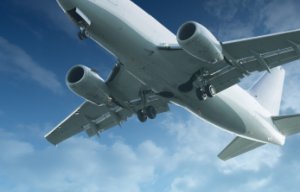
New COMAC aircraft made using Solvay materials takes flight
Boom Supersonic recently rolled out its XB-1 demonstrator in an important step towards the return of commercial supersonic travel.

4th December 2020
Innovation in Textiles
|
Morgan Hill, CA, USA
Boom Supersonic recently rolled out its XB-1 demonstrator in an important step towards the return of commercial supersonic travel following the retirement of Concorde in 2003.
Composites are integral to the XB-1’s design, with the fuselage, wings, vertical tail, horizontal tail, inlets, ailerons and rudder are made from TC350-1 toughened epoxy prepreg reinforced with IM7 carbon fibre from Toray Advanced Composites. Only the engine nacelles and aft fuselage are metallic.
Standard commercial airframes operate in temperatures ranging from –54°C to 71°C according to Boom, and Concorde’s skin and flight control surfaces were primarily aluminum, with traces of other metals that expanded due to heat friction from its Mach 2 speeds.
XB-1 raises the bar by employing lighter, less expensive thermally stable advanced composites.
“Material selection – specifically the resin system – is critical to ensure strength is maintained at the elevated temperatures the XB-1 will experience in flight,” says Mike Jagemann, director of XB-1 production for Boom. “Toray’s TC350-1 meets the aircraft’s extreme temperature requirements and is an ideal choice for supersonic aircraft such as XB-1.”
The tougher, lighter composites also made the XB-1 less expensive and easier to fabricate compared to aluminum and due to their decreased weight, they allow the aircraft to maximise fuel efficiency, cutting current trans-oceanic commercial flight times in half.
The completion of XB-1 marks a turning point in commercial viability for supersonic travel and leads the way for the development of Boom’s commercial airliner, Overture, a 55-passenger commercial aircraft with a 4,500 nautical mile range. At Mach 2.2, Overture will be the world’s fastest passenger plane.

Business intelligence for the fibre, textiles and apparel industries: technologies, innovations, markets, investments, trade policy, sourcing, strategy...
Find out more